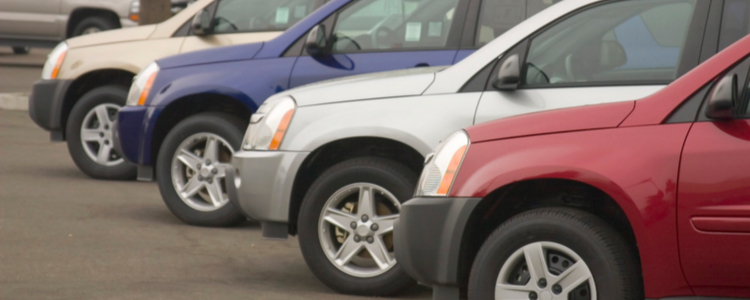With around 5 million vehicles in the wake of Florence, flood damaged vehicles could run in the thousands. “While, hopefully, these vehicles will have their titles marked flood damaged and go to salvage yards, many will likely re-enter the market as used cars,” said Jack Gillis, the Consumer Federation of America’s Executive Director and author of The Car Book. “Because of the computerization, electronics and sophisticated safety technology in today’s vehicles, it’s critical that you avoid getting stuck with one of these lemons.”
“Looks can be deceiving—with a nice clean up, these water infested vehicles, may actually look pretty good—which means knowing how to identify a flooded vehicle is critical. When it comes to buying a car, three out of four of us buy used. So there’s a big incentive for disreputable sellers to move flood damaged vehicles north hoping to sell them to unsuspecting buyers,” said Gillis. “While luckily less cars have been flooded compared to Harvey and Irma, flooded cars remain a significant risk to unsuspecting consumers. By following these tips, consumers can protect themselves from purchasing a vehicle which can put themselves and their families at risk,” Gillis continued.
Ten Tips for Avoiding a Flood Damaged Vehicle
- Check the VIN (Vehicle Identification Number) which is located on the driver’s side dashboard, visible through the windshield, with the National Motor Vehicle Title Information System established by the U.S. Department of Justice. You’ll have to pay a small fee for the information, but it’s the most comprehensive data base. You can also check with the National Insurance Crime Bureau (NICB) or CarFax (both currently offering free flood history information). Even if the database has no flood information, beware, as fraudsters have ways of getting around VIN registration information or it simply wasn’t reported.
- Use your nose. Beware if the vehicle smells musty or damp or if you smell some kind of air freshener. Close up the windows and run the air conditioner and check for a moldy smell.
- Look for dirt, mud and water stains. Check the carpets, seat upholstery, cloth lining inside the roof, if you see any dirt or mud stains, beware. Feel under the dashboard for dirt or moisture and look in the glove boxes, ashtray, and various other compartments for moisture or stains. If you see straight stain line either on the inside of the door panel, engine compartment or trunk—watch out, that’s probably how high the water went in the vehicle. Tip: If the carpeting, seat coverings or headliner seem too new for the vehicle, that’s a sign that they may have been replaced due to flood damage.
- Listen for crunch. Pull the seats forward and back and try all of the safety belts. If you’re looking at an SUV with folding seats, try folding them all. Listen for the ‘crunchy’ sound of sand or dirt in the mechanisms or less than smooth operation.
- Check the spare tire (or inflator) area. Look for mud, sand or stains on the spare tire and jack equipment and the well under the spare tire. Check under the trunk carpet for a rigid board and look to see if it is stained or has water damage.
- Power up. Be sure to try all the power options including windows, locks, seats, moon roof, automatic doors, wipers, window washers, lights, AC system, etc. If any don’t work, sound funny, or operate erratically, beware. And don’t forget the sound system. Try out the radio, CD player and Bluetooth connectivity. Adjust the speakers front and back and side to side to listen for any crackling or speaker failure.
- Check for rust or corrosion. Look around the doors, in the wheel wells, under the seats, under the hood and trunk and inside the engine compartment.
- Look under the hood. Look at the air filter. It’s often easy to check and will show signs of water damage. Check the oil and transmission fluid. If it looks milky or has beads of water, watch out.
- Take a test drive and listen for unusual engine or transmission sounds or erratic shifting and acceleration. Set the cruise control to see if it is working properly.
- Check out the head and tail lights; look closely to see if there is any water or fogging inside. Same with the dashboard—are any of the gauges foggy or containing moisture droplets.
Contact: Jack Gillis, 202-939-1018
Union members buying a preowned vehicle are eligible for a free CarFax Reports on most vehicles.


With Florence flooding thousands of vehicles, there’s a good chance unscrupulous sellers will try and sell these potentially dangerous vehicles.